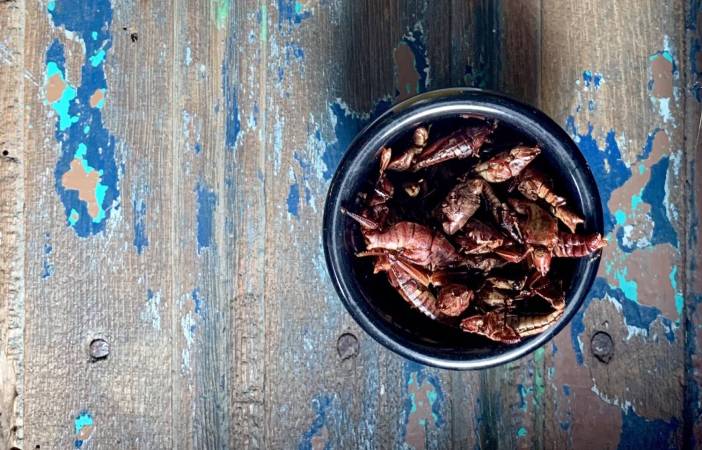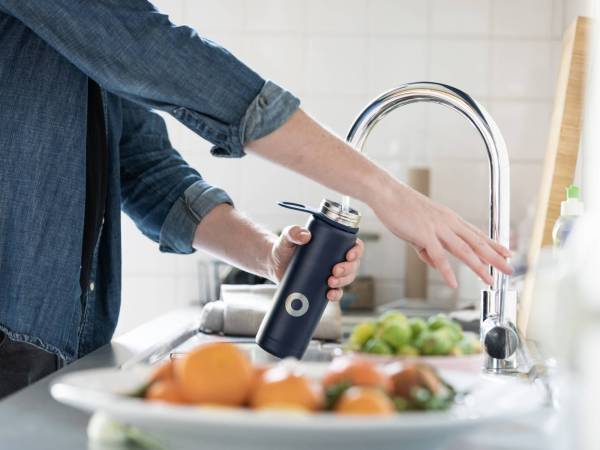Go turn on your kitchen faucet. We’ll wait. What do you see? Chances are, the water that’s gushing out looks perfectly clear, in every way unremarkable and ready for drinking. But just because your water looks fine, doesn’t necessarily mean it’s free of contaminants like lead, mercury, and pesticides. So what’s the solution, short of buying bottled or holding your nose and swigging unsavories?
It’s simple: A filtration system mounted to your faucet. It filters the tap water that streams from your pipes, acting as a sort of defense, says Mike Mitchell, the Director of Advanced Technology at PUR. “Filtration systems offer us a form of insurance.”
So what sorts of contaminants does a faucet system filter out, and how does it work? We tapped Mitchell for a lesson in high-tech filtration.

How a faucet-mounted filter works
A good water filter will capture the bad stuff like lead, industrial pollutants, and other contaminants. It sounds simple enough—but it’s more complicated than it seems.
“Most filters start with some form of activated carbon,” Mitchell explains. “It’s got a significant surface area that can absorb molecules.” Just one gram of activated carbon has the surface area of four tennis courts. PUR uses activated carbon that’s made from coconut shells, which boasts pores that are even tinier than other types of carbon filters. As water passes through, the contaminants fill up the surface area. “Think of it almost like a parking garage, with a certain number of spaces to put stuff—when those places are full, it’s time to replace the filter.”
Beyond the activated carbon, there’s also an ion exchange happening in each filter. “Lead and iron can carry a charge,” Mitchell explains. During an ion exchange, the filter essentially trades the harmful ions for harmless ions with the same charge. Plus, PUR filters have a nonwoven material, which sits around the carbon block, collecting turbidity (substances like rust and dirt that can make water appear cloudy) and keeping the carbon block from clogging.
Mitchell always has two things on his mind: Collector efficiency and sticking coefficient. In a nutshell—coconut shell?—he wants to make sure the filters PUR produces have plenty of sites that will accept contaminants and that the contaminants will stick to these sites.
What the filters actually filter
This quest for “efficiency,” has potent results. PUR faucet filters are certified to reduce more than 70 contaminants, more than any other brand. These faucet filters reduce chlorine, heavy metals like lead and mercury, industrial pollutants like benzene and DEET, pesticides and pharmaceuticals, and other organic compounds that can make your water taste or smell a little off. “Faucet filters remove more things because they’re connected to your water line,” Mitchell says. “Water lines in the U.S. normally measure in at 60 psi of pressure, so we can make much finer pore structures and remove more contaminants.” And yet these filters leave in mineral ions like calcium and magnesium, which benefit your body and even improve the taste of water.

Keeping up with health concerns
Thanks to our aging infrastructure, new undesirables can be introduced into our water supply. So a filter that’s effective at reducing 70 contaminants may not be able to recognize every new pollutant that creeps into our pipes. As contaminants get added to our water supply, Mitchell and his team work to adapt PUR’s current filters or create a new model. “We are constantly looking to forecast the biggest risks to the public health and we try to make products to address those risks,” says Mitchell. “You never know what the next thing’s going to be.” Translation: Filtering water is a tall order—good thing there are those with the thirst to keep evolving.








